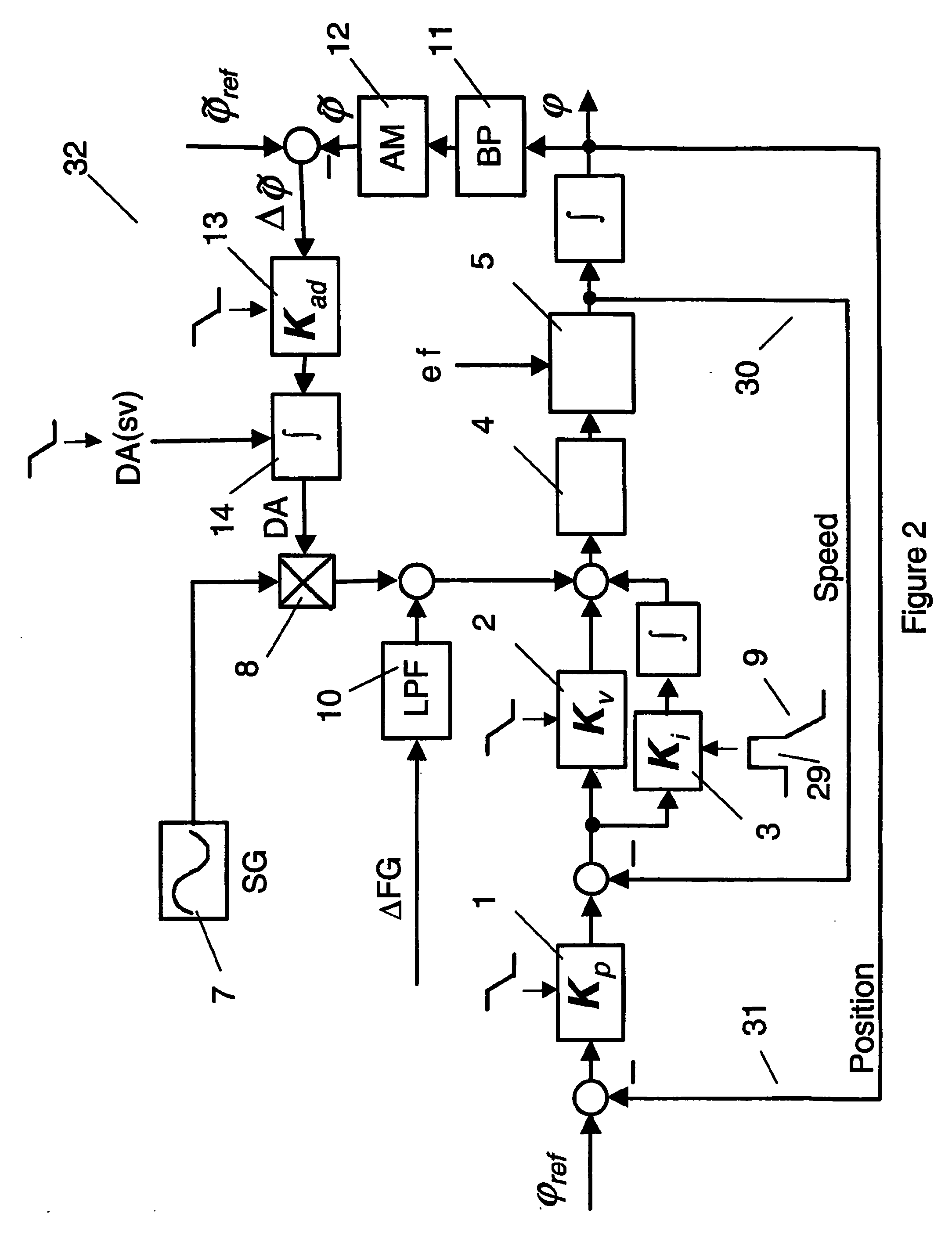Control Method for a Robot
a robot and control method technology, applied in the field of robot control methods, can solve the problems of increasing friction, increasing load on the bearings, and difficult movement in response to external forces, and achieve the effects of reducing frictional forces, reducing frictional forces, and reducing frictional forces
- Summary
- Abstract
- Description
- Claims
- Application Information
AI Technical Summary
Benefits of technology
Problems solved by technology
Method used
Image
Examples
Embodiment Construction
[0025]FIG. 1 (Prior Art) shows a control loop for controlling one axis of a robot, as it is normally used for control of robots. The control is a cascade control comprising an internal velocity control loop with PI-controllers 2, 3 and an external position control loop (with position measurement on the motor side) with P-controller 1. The parameters of the control are usually selected as high as possible in order to ensure that the robot follows the path generated according to a series of desired positions, as accurately as possible, and also under the influence of external forces. The motor torque control servo 4 providing an input with a torque reference is shown and a motor, gear / gearbox and arm indicated schematically as another block 5.
[0026] In the Prior Art control method in order to attain the desired compliance of the robot, in 1, 2 the integral component of the PI-controllers of the velocity control loop 3 is disconnected at switch 6 when changing from normal to complianc...
PUM
 Login to View More
Login to View More Abstract
Description
Claims
Application Information
 Login to View More
Login to View More - R&D
- Intellectual Property
- Life Sciences
- Materials
- Tech Scout
- Unparalleled Data Quality
- Higher Quality Content
- 60% Fewer Hallucinations
Browse by: Latest US Patents, China's latest patents, Technical Efficacy Thesaurus, Application Domain, Technology Topic, Popular Technical Reports.
© 2025 PatSnap. All rights reserved.Legal|Privacy policy|Modern Slavery Act Transparency Statement|Sitemap|About US| Contact US: help@patsnap.com



